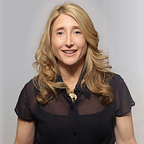Where do successful products come from?
Consultants usually present the Best Practices of product development in one of two ways. The first is through densely worded documents, abstract concepts and diagrams. The second is through hands-on workshops, where a company applies (usually) a proprietary methodology to meet a specific goal.
In both cases, I’ve always felt as though something was missing.
This might speak to the difference between training and learning. Training is instruction that works in one direction — the trainer to the trainee. It assumes that an expert has the answer, and you don’t.
In my experience, people tend to be more effective with a broader sort of learning in which everyone is considered an expert in something. It assumes that the right product emerges through collaboration and that the sum of the parts is of greater value together than any person in the room would be alone.
I had a rare opportunity to participate in the second sort of process this week with Activate Capital. Generally the sort of detail involved in impact mapping and customer segmentation puts me to sleep. But my partners at Activate and the guys at Hello Tomo together created an inspiring environment where everyone — including those considered the teachers — learned a lot.
One key to the success is the questions with which we began. Rather than starting with customer segmentation or sales, Matt asked Gus and Fahad to define their vision, passion and purpose.
This wasn’t a soft question to get the ball rolling. It demanded that the Founders define in great detail their the specifics of everything from their financial requirements, future hiring policies and management strategies to the kinds of lives they wanted to lead day-to-day.
In fact, the questions were so demanding that both founders felt they needed to consider their answers throughout the process of customer segmentation and impact mapping. The thinking informed these processes, but these processes also informed their answers.
I think it’s important to note that Gus and Fahad have a lot of courage. They entirely discarded the product as they had envisioned it to see if there was something better to be had. How many people have you seen willing to do this after 6 months of dedicated work?
It was exciting to participate, but there is too much to report in one short post. More next week.
